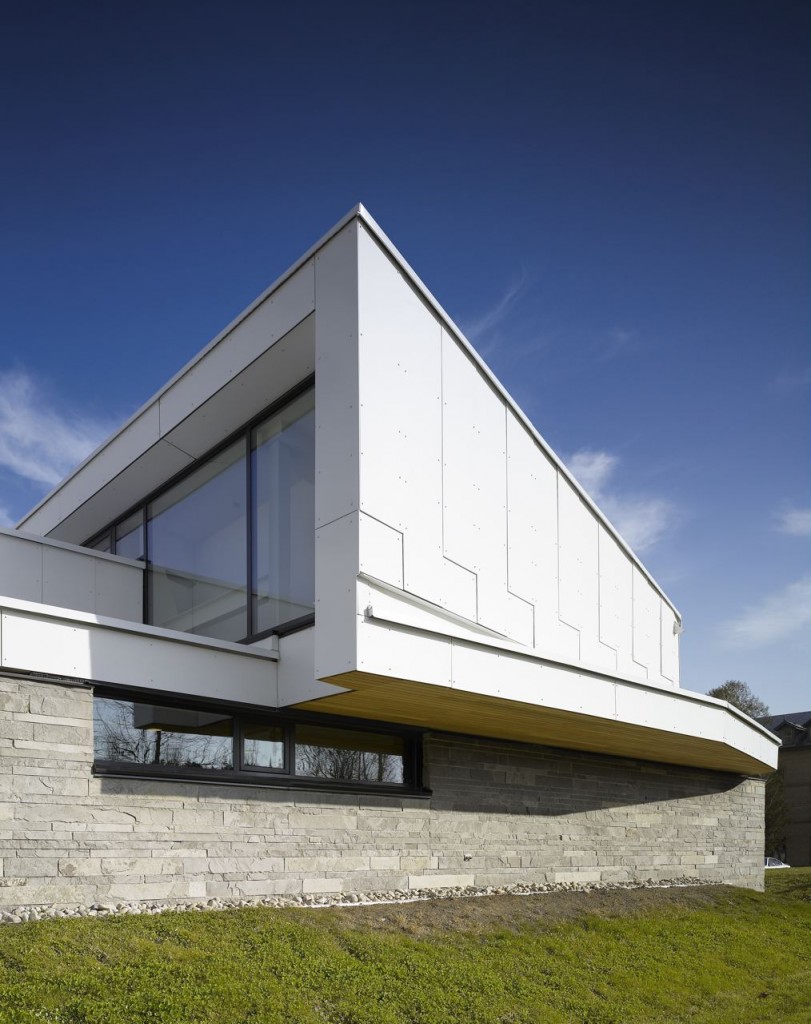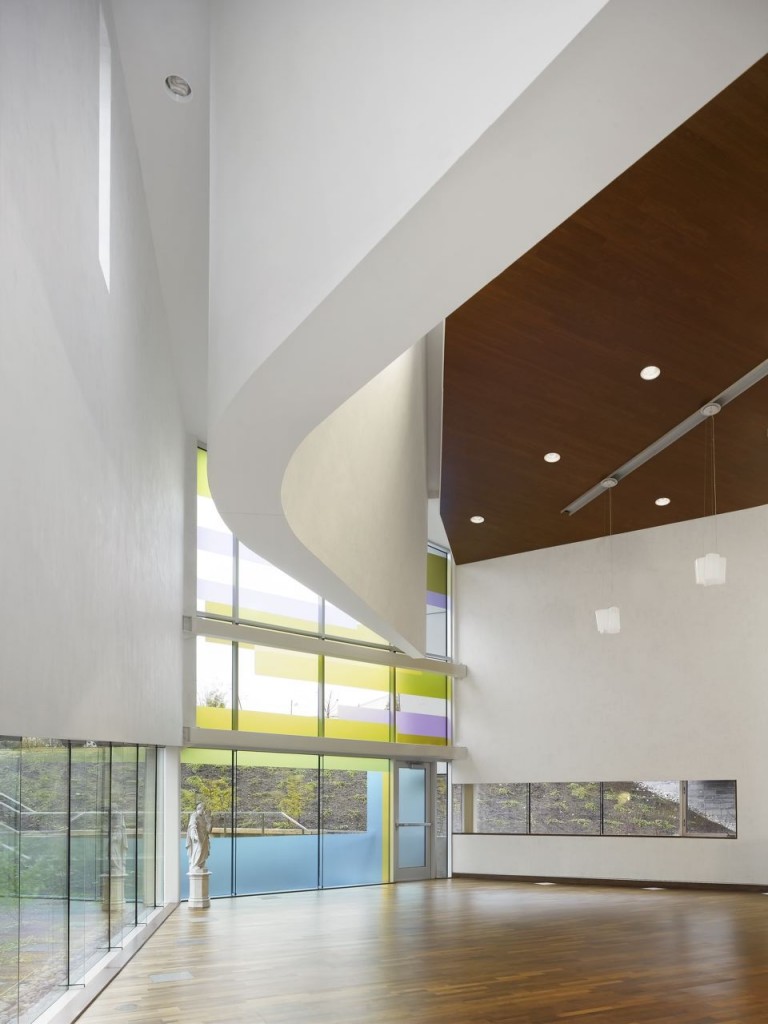
They may be a little older on average, but the Sisters of St. Joseph in Peterborough are not old-fashioned when it comes to the sustainability of their new Motherhouse. It is the first LEED Gold building in the Peterborough area, and it won a 2012 Ontario Association of Architects Award of Excellence.
After a long history of expansion since 1890, and then a certain amount of decline by 2000, the Sisters began to talk about upgrading their old 1930s Peterborough facility and their continuing mission. A primary focus has always been ministering to the needy. For the new convent they also made ‘a harmonious relationship with the earth’ a key goal. They sold about 44 of the property’s 50 acres and by 2009 had created a new 56,500-square-foot building with a fly-ash concrete structure and recycled steel skeleton.

Teeple Architects and Enermodal Engineering designed a highly sustainable space that includes an 80-seat chapel, main gathering area, (featuring stained glass from the old building), dining room, kitchen, library, beauty parlour, lounges, exercise room, administration offices, sister’s residences and an infirmary. The two-storey complex is built into the side of a slope as a literal expression of harmony with the earth. It is anchored on locally quarried ledge rock limestone. The upper portion is clad in white fiber-reinforced cement paneling. Its freeform rhythm and generous windows bring an airy, bright, light, heavenly glow to the proceedings.
DIVINELY INSPIRED
To mitigate solar gain the building is oriented for a north-south axis with overhangs shading the south side of the building. The roof is mostly white reflective thermoplastic, except for a small green roof near the south side. Double-pane argon-filled low-e windows also contribute to reduced heat island effect, while optimizing natural light. The thermally efficient fiberglass windows and semi-rigid insulation of basalt rock and recycled steel slag provide a contemporary, efficient envelope.
Two high-efficiency modulating, condensing boilers, a variable speed cooling tower, and distributed water source heat pumps are used for heating and cooling; with energy recovery ventilators as needed. Building managers have been trained to optimize use of the sophisticated controls system. The Sisters can also use operable windows for added ventilation. Savings are more than 4,000,000 mega joules per year and 282 tons of CO2.

Efficient 4 litre toilets, 1.9 litre/min faucets and 6 litre/min shower-heads help control water usage. Landscaping is mostly native or adaptive, drought-resistant plants. The green roof and other areas are supplied by rainwater collected from the white roof and stored in a cistern. Projected water savings are about 627,000 litres or 40% per year.
LIGHT FROM THE HEAVENS
Most spaces within the building are adequately naturally lit for daytime. Interior light systems employ occupancy sensors, cutting density to about 33% below ASHRAE standards. A local manufacturer modified lamp chandeliers to fit compact fluorescents. Exterior fixtures emit light below 90 degrees from the horizon, minimizing impact on the night sky.
The new facility features full recycling separation, low emission adhesives, sealants, paints, and coatings to improve air quality; and during construction $700,000 was saved by recycling 28 different materials. In addition 79% of construction waste was diverted from landfill and a large quantity of materials were locally sourced.

The hope is that the building will outlive its hosts and become a seniors home in the future. The adaptation should be easy. The infirmary provides 24-hour nursing care for 12, while the rest of the building offers full accessibility, railings, call buttons, resilient flooring, and contrasting color between walls and floors.
The Sisters have created a highly detailed how-to powerpoint and joined the Greening Sacred Spaces network to share their experiences. “We need to heal the planet from our excessiveness,” they say. “And to learn new sustainable practices that are harmonious with the wondrously evolving web of life.”